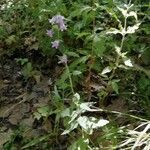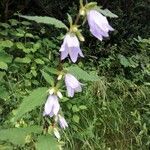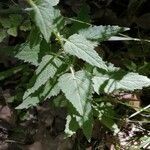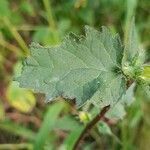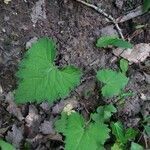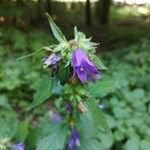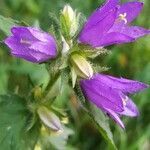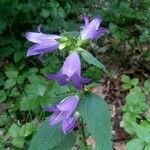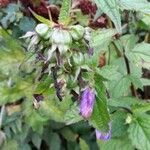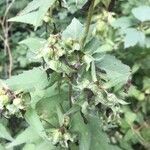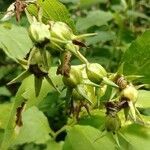It is an erect herb. It grows 60 cm high and spreads 30 cm wide. It has bristles. The leaves are pointed and have teeth along the edge. They are rough and more pale underneath. The flowers are large. They are blue and bell shaped. They are 30-50 mm long. They are either horizontal or point upwards. The flowers at the top open first.

